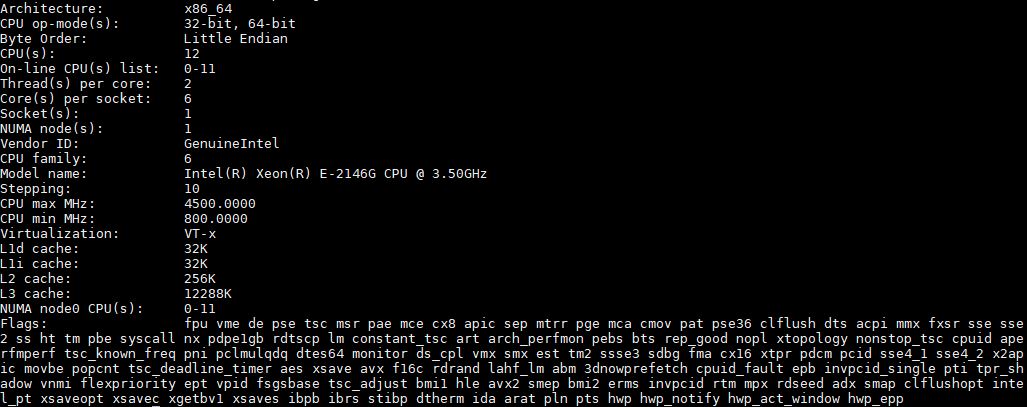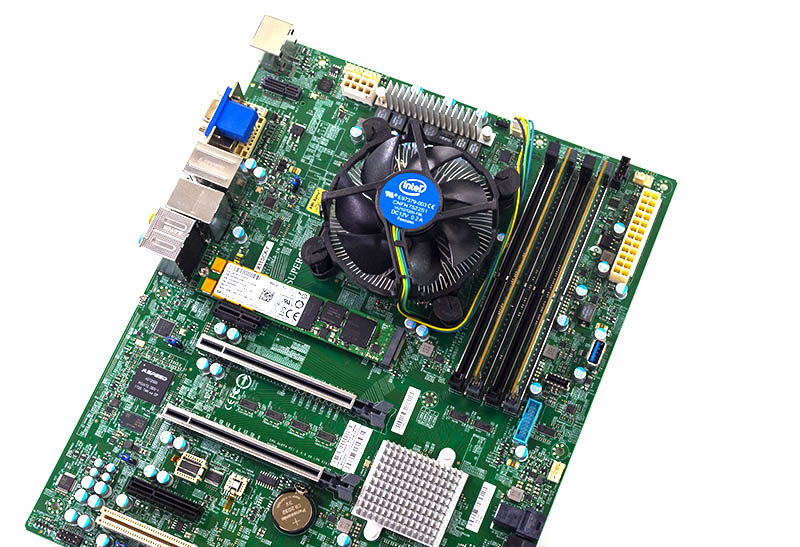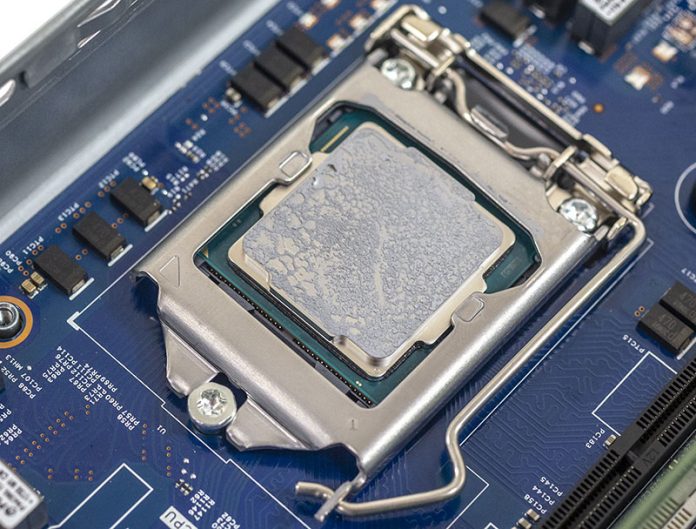Let us save you some time with this review: the Intel Xeon E-2146G is the SKU to get in this lineup. We are going through our full review but the Xeon E-2146G is the most versatile Coffee Lake platform that has been launched to date. One can get higher-end SKUs in the CPU stack like the Intel Xeon E-2176G but one only gets a small bit of incremental performance. As we stated in our Intel Xeon E-2136 Benchmarks and Review piece, the Xeon E-2146G adds some incremental performance along with the iGPU making it a more versatile part for a small percentage cost increment on a system basis. In our review, we are going to show you why we are making this recommendation.
Key stats for the Intel Xeon E-2146G: 6 cores / 12 threads and 3.5GHz base clock and 4.5GHz turbo boost with 12MB cache. The CPU features an 80W TDP. This is a $311 list price part which is very reasonable for this level of performance in today’s market. Here is the ARK page with the feature set.
Here is what the lscpu output looks like for the chips:

Test Configuration
Here is our basic configuration for this class of CPU:
- Motherboard: Supermicro X11SCA-F
- CPU: Intel Xeon E-2146G
- RAM: 4x 8GB DDR4-2400 ECC UDIMMs
- SSD: Intel DC S3710 400GB
- SATADOM: Supermicro 32GB SATADOM
The CPU itself supports up to 64GB of RAM, in a 4x 16GB configuration, today. Intel specs say that as 32GB ECC UDIMM modules become available, the CPUs will support 128GB in 4x32GB configurations. We see these platforms using 32GB or less given cost sensitivities.

There are going to be folks who want to point to AMD alternatives. As of this writing, there are really no alternatives in this space because while AMD may have competitive CPU parts, vendors have a vibrant Intel Xeon E-2100/ Core i3 ecosystem. AMD needs to do some work here to catch up, but it is not a focus market for them. Single socket servers in this segment are a relatively low volume area.
Next, we are going to take a look at our Intel Xeon E-2146G benchmarks, we are then going to focus on power consumption then conclude with our final words on the processors.





This has shades of Tom’s infamous RTX 2080 Ti just buy it now.
Sinclair this is really different right? Tom’s now recommends stuff because it’s new before they test it. The GTX 1080 Ti or RTX 2080 are better buys than the 2080 Ti but Tom’s said to go buy it without testing.
Here they’re giving an opinion, but they’ve got power and performance data for other chips in this family as well as other families from AMD and Intel.
People have been giving up on Tom’s credibility because they’re recommending without data or work. This is a recommendation where they’ve gotten a big test data set and used that to inform a recommendation.
I think there are reasons to go with the E-2176G and E-2186G but they’ve got a point showing why you’re paying more for a small increase in performance.
I would love to buy one of these, but can’t find them in stock anywhere. Same with boards in a mATX and mITX format.
Tomshardware said buy with no data. There is plenty here and reasoning to support it.
There is pretty much no use case where the Intel “Xeon” E-2000 series makes sense. If you do signage or edge transcoding (as I do in every day life) the X11SCA-F and other C246/C242 motherboard also support the i3 series CPUs which will offer all the same features or the i5 (and now also the i9 series) which trade ECC support for higher clocks. Given that transcoding use cases are not prone to memory errors or corruption this is an instant 50% cost saving on the CPU for equal performance.
If you care about ECC changes are you care about memory intensive applications, in which case Xeon D for Edge compute, Xeon W for workstation or Xeon Scalable make sense. Xeon E-2000 is an artifical product segment that has no right to exist, were it not that Ryzen motherboards with BMC are non-existent. I would not be surprised if at a later date it will come to light that Intel pressured partners into prioritizing C242/C246 lines by providing incentives.
David that’s silly. They’ve been selling these for years. There’s even a link in this article to the history of them. If you’re selling dedicated hosting servers, the E3 and now E-2100 are way cheaper than anything else.
Tony historically they had features that set them apart from the consumer chips (like ECC,HyperThreading or thermal tolerances) which is no longer the case.
Right now it’s difficult to argue to buy the same chip with a different name but at a 25-30% premium.
There is a definite market for this in the homelab market, although we all know how niche that is. Ideally we all want something that can support things like FreeNAS, Unraid, etc., but also utilize the iGPU to offload transcoding, and to typically do it in a small package. That doesn’t leave many options. This is one of them.
It seems that in the most of the EU the new E-2xxx series is unobtanium.